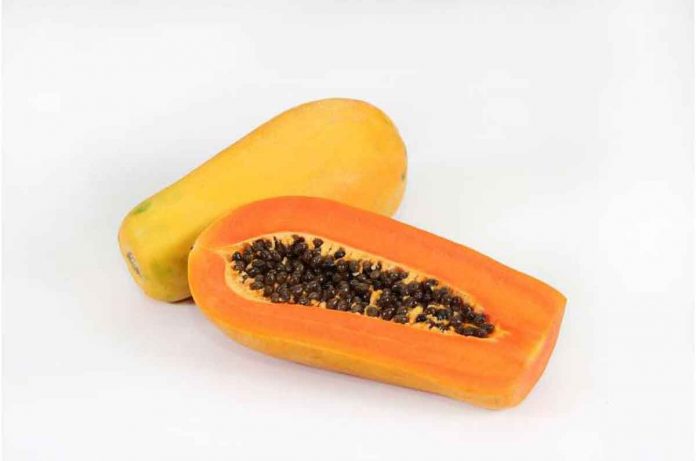SunUp, transgenic papaya that can resist the papaya ringspot virus, was developed in the 1990s and became widely known. Even though the genomic sequence of SunUp had been determined by 2008, it was unclear where the transgenic insertions were located and what effect they produced. These alterations, as well as how they affect plants, have been discovered in a new study.
Because papaya fruits are high in potassium, magnesium, and vitamins A and C, their global production has been steadily increasing. Papaya is a tropical and subtropical fruit that originated and was domesticated in southern Mexico and Central America. It is presently grown in tropical and subtropical locations all over the world.
The wild papaya produces little seedy fruits with little edible flesh, whereas the domesticated variety can weigh up to five pounds. However, papaya was susceptible to the papaya ringspot virus, which resulted in stunted plants that did not produce mature fruit, and there was no resistance in the papaya genetic code.
The transgenic papaya SunUp was then created using a technique known as particle bombardment-mediated transformation. Using a gene gun, gold particles were coated with the virus’s coat protein gene and blasted into the cells of the non-transgenic papaya “Sunset.” SunUp, as a result, had virus gene sequences and was immune to infection.
“It took us eight years to read every DNA nucleotide in the insertions and rearrangements, and we repeated the sequencing using several technologies to determine the nature of these transgenic insertions,” said the University of Illinois Urbana-Champaign plant biologist Ray Ming. “The insertion was so complicated that even after sequencing the genome in 2008, we had no idea where the transgenic genes were.”
The researchers observed that SunUp contained a 1.6 million base pair insertion, which included DNA fragments from the gene gun as well as nuclear and organelle genome fragments from the parent Sunset cultivar. The findings were reported in the journal Nature Genetics.
“This research neatly unravels the changes generated by particle bombardment-mediated transformation in the papaya genome and gives fresh insights into papaya domestication,” said Gerald Schoenknecht, a program director with the National Science Foundation’s Division of Integrative Organismal Systems.
Despite the huge insertion, the transgenic alteration had no effect on gene expression, according to the researchers. “We examined every gene sequence and found no effect on genome function,” Ming said. “When we compared SunUp and Sunset, we found that there are just 20 genes that are differentially expressed, all of which are due to transposon-mediated rearrangements rather than particle bombardment-mediated transformation.”
Transposon-mediated rearrangements happen naturally and result in progressive alterations over time, which is to be expected given that SunUp and Sunset have been expanding and diverging over the past 30 years.

